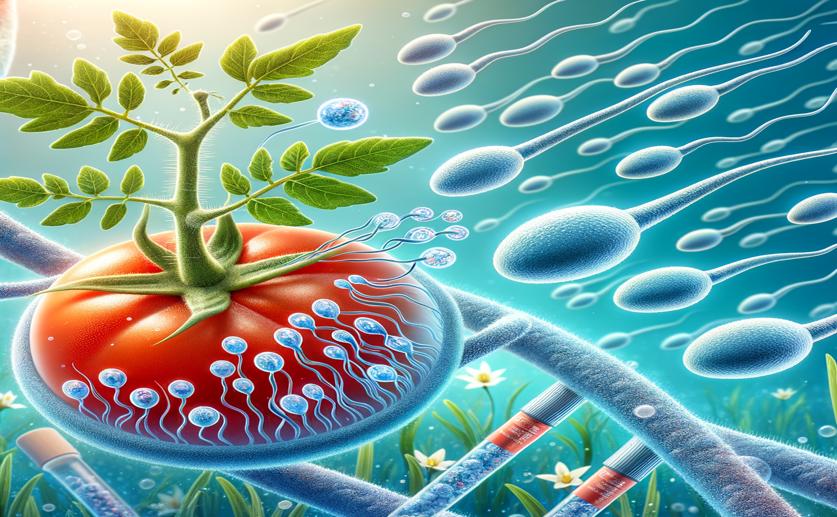
Genetic Landscape of Key DNA Modifications in Tomato Sperm Cell Development
Greg Howard
27th June, 2024

Image Source: Natural Science News, 2024
Key Findings
- The study by the Chinese Academy of Sciences explored how histone modification H3K4me3 affects gene expression during sperm cell development in tomatoes
- H3K4me3 was mainly found in promoter regions of genes and increased as sperm cells differentiated from somatic cells
- After microspore division, generative and sperm cells showed similar H3K4me3 patterns, distinct from vegetative cells
- There was a selective loss of H3K4me3 in hormone signaling genes, affecting brassinosteroid in generative cells and cytokinin in vegetative cells
References
Main Study
1) Whole-genome landscape of histone H3K4me3 modification during sperm cell lineage development in tomato.
Published 27th June, 2024
Journal: BMC plant biology
Issue: Vol 24, Issue 1, Jun 2024
Related Studies
2) Male gametogenesis and germline specification in flowering plants.
3) Transcriptomics analyses reveal the molecular roadmap and long non-coding RNA landscape of sperm cell lineage development.
4) Plant germline formation: common concepts and developmental flexibility in sexual and asexual reproduction.
5) Chromatin reprogramming during the somatic-to-reproductive cell fate transition in plants.



 26th June, 2024 | Jenn Hoskins
26th June, 2024 | Jenn Hoskins